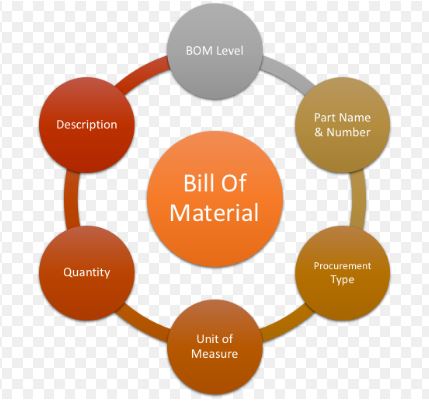In manufacturing and product development, maintaining efficient production processes and ensuring accurate inventory management are essential for success. The Bill of Materials (BoM) plays a critical role in achieving these objectives. A BoM is a comprehensive document that lists all the components, materials, and sub-assemblies required to manufacture a product. In this article, we will explore the significance of a BoM, its key elements, and how it facilitates effective production planning and control.
Importance of Bill of Materials:
Accurate Component Identification: A BoM provides a detailed inventory of all the components needed to build a product. It specifies part numbers, descriptions, quantities, and any other relevant information that helps identify and procure the correct materials. This ensures accuracy in the production process, minimizing errors and avoiding costly delays or rework.
Efficient Production Planning: With a well-defined BoM, manufacturers can effectively plan and schedule production activities. The BoM helps determine the assembly sequence, the required resources, and the time required for each step. By understanding the dependencies between components and sub-assemblies, production managers can optimize workflows, streamline processes, and minimize production bottlenecks.
procurement. By referring to the BoM, organizations can calculate the exact quantities of materials and components needed for production. This enables accurate demand forecasting, prevents stockouts or excess inventory, and improves cash flow management. Additionally, the BoM facilitates efficient procurement by providing clear specifications for sourcing and ordering materials from suppliers.
Cost Estimation and Control: The BoM helps manufacturers estimate the cost of producing a product accurately. By assigning costs to each component and sub-assembly, organizations can calculate the total production cost. This information is crucial for pricing decisions, profit margin analysis, and cost control efforts. Regularly reviewing and updating the BoM enables organizations to identify cost-saving opportunities, explore alternative suppliers, or optimize component selection to reduce production expenses.
Key Elements of a Bill of Materials:
Item Information: Each component in the BoM is identified with a unique part number or code. This helps in inventory management and ensures accurate identification during production.
Description: A clear description of each component or material helps eliminate ambiguity and facilitates procurement.
Quantity: The required quantity of each component or material is specified in the BoM. This ensures accurate ordering and minimizes wastage or shortages.
Unit of Measure: The BoM includes the unit of measure (e.g., pieces, pounds, liters) for each component, enabling accurate quantity calculations and inventory tracking.
Hierarchy and Structure: The BoM illustrates the hierarchical structure of the product, including sub-assemblies, intermediate assemblies, and the final product. This hierarchy defines the relationship between components and guides the assembly process.
Revision Control: As products evolve, revisions may be made to the BoM. Including revision numbers and dates ensures that everyone involved in production is working with the correct version of the BoM.
Reference Designators: Reference designators assign unique labels or identifiers to components, indicating where they are located on the product. This aids in the assembly process and simplifies troubleshooting or repair tasks.
Conclusion:
A well-structured and accurate Bill of Materials (BoM) is a vital tool for manufacturers, enabling effective production planning, inventory management, and cost control. It serves as a comprehensive guide, detailing the components, materials, quantities, and assembly sequence required to build a product. By incorporating a BoM into their processes, organizations can streamline production, minimize errors, optimize inventory levels, and enhance overall operational efficiency. Embracing a robust BoM management system is an essential step






